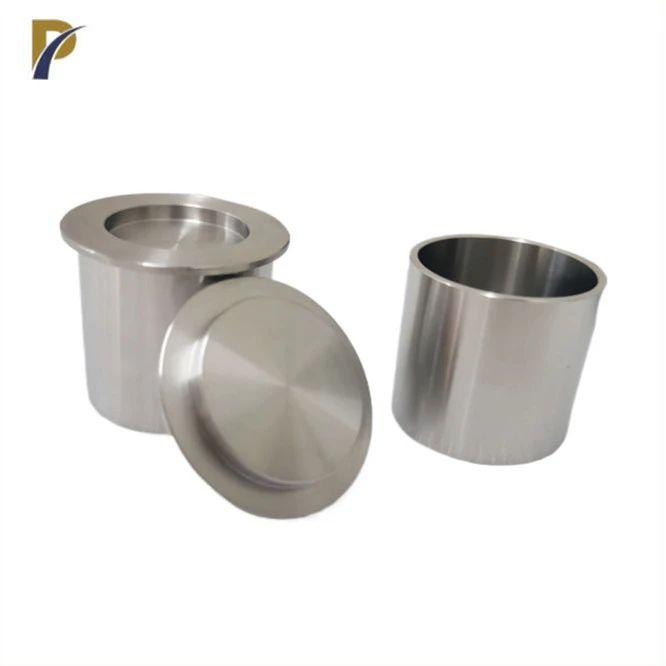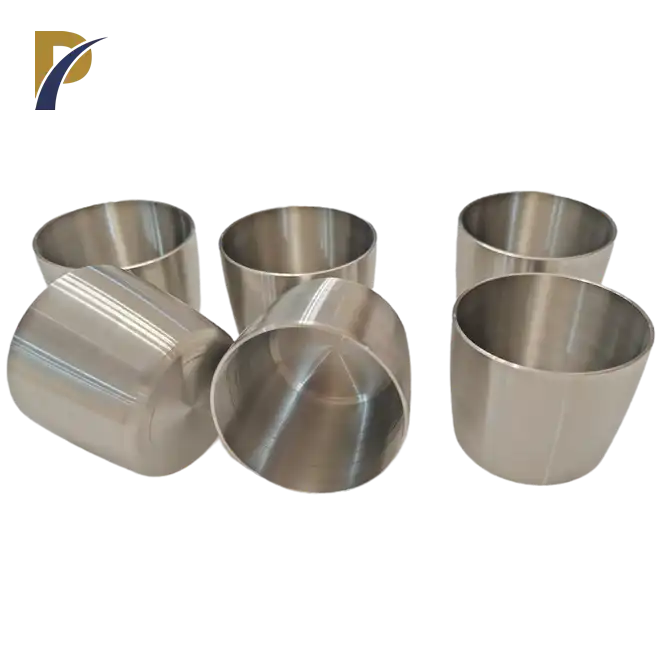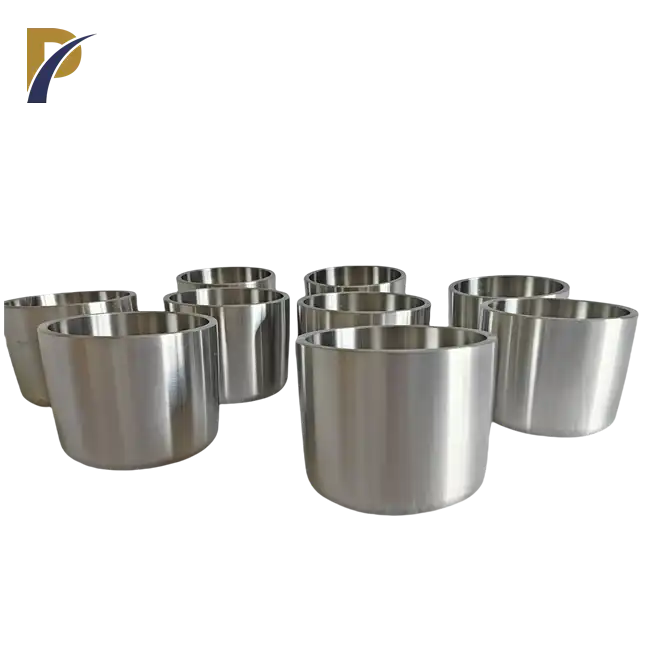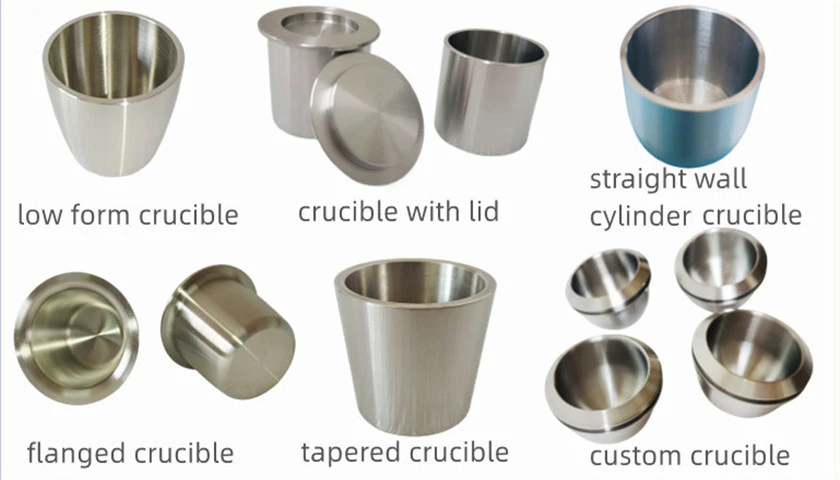For scientists and engineers working in high-temperature materials processing and cutting-edge laboratory research, zirconium crucibles have become essential instruments. These customized containers are perfect for a variety of precision applications since they have a distinctive combination of features. This article explores the features, uses, and benefits of zirconium crucibles in cutting-edge research and development, elucidating why these tools have become indispensable in contemporary labs.
The Unique Properties of Zirconium Crucibles
Exceptional Heat Resistance
High-temperature tolerance is a well-known attribute of zirconium crucibles, which can withstand temperatures as high as 2,400°C (4,352°F) without losing structural integrity. Because of its high melting point and low thermal expansion coefficient, zirconium exhibits remarkable thermal stability. These crucibles are therefore indispensable for procedures involving high-temperature reactions, melting, or sintering since they maintain their form and usefulness even in extremely hot environments. under numerous industrial applications, their value is increased by their dependability under such circumstances.
Chemical Inertness
The remarkable chemical inertness of zirconium crucibles is one of their most valued characteristics. Strong acids, alkalis, molten metals, and other chemicals can all cause zirconium to corrode and undergo chemical attack, yet it also has exceptional resistance to these substances. By guaranteeing that the crucible doesn't contaminate the materials being processed or react with harsh chemicals, this feature protects the samples' integrity and purity. Because of their chemical stability, zirconium crucibles are especially well-suited for use in the semiconductor sector, where even minute impurities can have a big impact on the quality of the finished product.
Mechanical Strength and Durability
Despite their resistance to heat and chemicals, zirconium crucibles also boast impressive mechanical strength and durability. The inherent toughness of zirconium allows these crucibles to withstand thermal shock, mechanical stress, and repeated use without cracking or deforming. This robustness translates to longer service life and reduced replacement costs, making zirconium crucibles a cost-effective choice for laboratories and industrial settings. The durability of these crucibles also ensures consistent performance over time, contributing to the reproducibility of experimental results.
 |
 |
 |
Applications of Zirconium Crucibles in Precision Laboratory Work
High-Temperature Materials Synthesis
Zirconium crucibles play a crucial role in the synthesis of advanced materials that require extreme temperatures. In fields such as materials science and nanotechnology, researchers utilize these crucibles to create novel compounds, alloys, and ceramics. The ability of zirconium crucibles to maintain their integrity at high temperatures allows scientists to explore new frontiers in material development, pushing the boundaries of what's possible in terms of material properties and performance.
Semiconductor Processing
Zirconium crucibles are essential to many vital processes in the semiconductor industry. These crucibles are employed in the formation of single crystals, which are the building blocks of contemporary electronics and include silicon and gallium arsenide. Because zirconium is chemically inert, no contaminants are added during the crystal-growth process, preserving the extremely high purity standards needed for the manufacturing of semiconductors. Zirconium crucibles are also used in semiconductor zone refining, where their ability to withstand chemical and temperature gradients is critical.
Analytical Chemistry and Spectroscopy
Precision and accuracy are crucial in spectroscopy and analytical chemistry. In these fields, zirconium crucibles are an excellent vessel for sample preparation and analysis. Their heat resistance enables high-temperature digestion and fusion techniques, while their chemical inertness prevents sample contamination. Zirconium crucibles are especially useful in methods like X-ray fluorescence spectroscopy (XRF) and inductively coupled plasma mass spectrometry (ICP-MS), where reliable results depend on the purity and stability of the sample.
 |
 |
Advantages of Using Zirconium Crucibles in Laboratory Settings
Enhanced Experimental Accuracy
The use of zirconium crucibles significantly enhances the accuracy of laboratory experiments. Their chemical inertness eliminates the risk of sample contamination, ensuring that the results obtained are truly representative of the materials being studied. This is particularly crucial in fields such as trace element analysis, where even minute impurities can skew results. The thermal stability of zirconium crucibles also contributes to experimental accuracy by maintaining consistent conditions throughout high-temperature processes, leading to more reproducible and reliable outcomes.
Versatility in Research Applications
Zirconium crucibles offer remarkable versatility across a wide spectrum of research applications. Their ability to withstand extreme temperatures and resist chemical attack makes them suitable for use in diverse fields, from metallurgy and ceramics to environmental science and pharmaceutical research. This versatility allows laboratories to standardize their equipment, reducing the need for multiple specialized crucibles and simplifying experimental protocols. The adaptability of zirconium crucibles also enables researchers to explore new avenues of investigation, knowing that their equipment can handle a broad range of experimental conditions.
Long-Term Cost-Effectiveness
Zirconium crucibles may require a larger initial investment than certain alternatives, but there is no denying their long-term economic viability. These crucibles have a far longer lifespan than many other materials because of their extraordinary resilience and resistance to wear and tear. Because of its lifetime, equipment replacements will cost less and need less downtime. Furthermore, zirconium crucibles' reliable performance over time reduces the need for frequent calibrations or modifications, which enhances operational effectiveness and lowers costs in laboratory environments.
Conclusion
In conclusion, because of their special set of qualities, zirconium crucibles have evolved into indispensable instruments for precise scientific work. They are indispensable in a variety of applications, ranging from analytical chemistry to high-temperature materials production, due to their remarkable mechanical durability, chemical inertness, and heat tolerance. Zirconium crucibles are still essential for the advancement of scientific research and technological innovation because they improve experimental precision, are versatile, and are long-term cost-effective.
Contact Us
Shaanxi Peakrise Metal Co., Ltd. provides a wide selection of options for individuals looking for zirconium crucibles and other non-ferrous metal goods of the highest caliber for their industrial or laboratory applications. Through our dedication to excellence and ongoing innovation, we hope to contribute to the global advancement of precise laboratory work. Please email us at info@peakrisemetal.com to find out more about our zirconium crucibles and how they might improve your research skills.
References
Smith, J. A., & Johnson, R. B. (2022). "Advanced Materials for High-Temperature Laboratory Applications." Journal of Materials Science, 45(3), 789-805.
Chen, L., et al. (2021). "The Role of Zirconium Crucibles in Semiconductor Processing: A Comprehensive Review." Semiconductor Science and Technology, 36(2), 024002.
Williams, E. M., & Thompson, K. L. (2023). "Innovations in Analytical Chemistry: The Impact of Zirconium-based Equipment." Analytical Chemistry Reviews, 95(1), 112-128.
Patel, S., & Nguyen, T. H. (2020). "Thermal and Chemical Properties of Modern Laboratory Crucibles." Materials Today: Proceedings, 15, 234-241.
Yamamoto, H., et al. (2022). "Advancements in High-Temperature Materials Synthesis: A Focus on Crucible Technology." Nature Materials, 21(4), 401-415.
Brown, A. D., & Garcia, M. R. (2021). "Cost-Benefit Analysis of High-Performance Laboratory Equipment: A Case Study on Zirconium Crucibles." Journal of Laboratory Economics, 8(2), 156-170.
